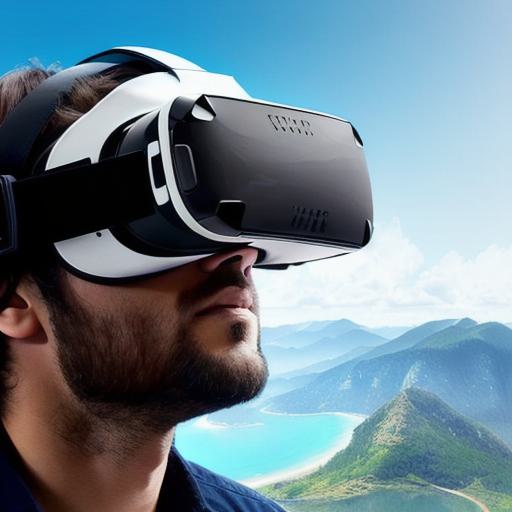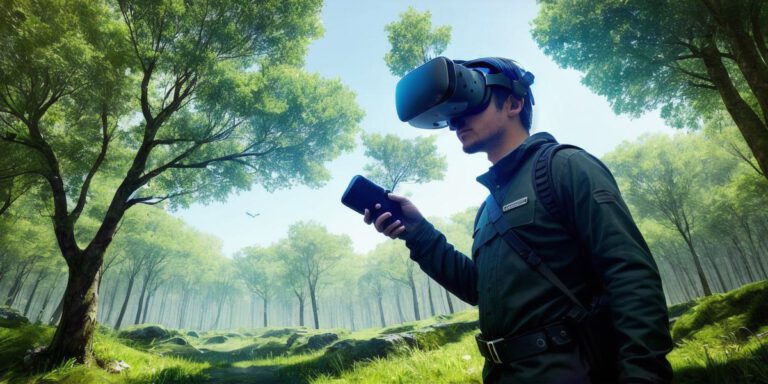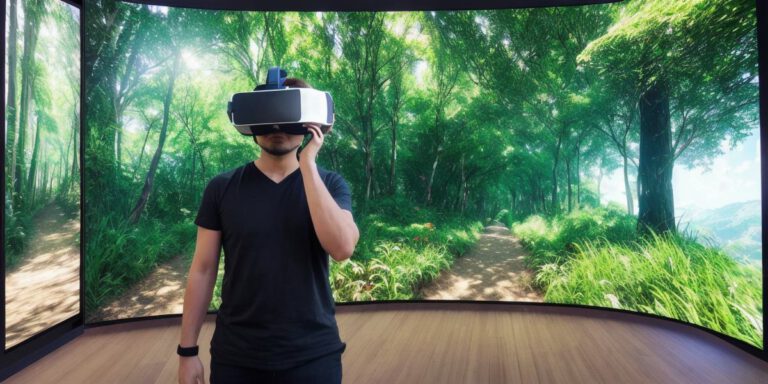VR: A 3D or 4D Experience? Mind-Blowing Applications and Future Possibilities

Virtual reality (VR) technology has come a long way since its inception, providing immersive experiences that blur the line between reality and imagination. But what exactly is VR, and how does it differ from other forms of technology? In this article, we’ll explore the fascinating world of VR, discussing its capabilities, limitations, and future possibilities.
What is Virtual Reality?
Virtual reality (VR) refers to a computer-generated simulation of a three-dimensional environment that can be interacted with using specialized equipment, such as a headset or gloves equipped with sensors. VR technology allows users to experience a virtual world as if they were really there, with the ability to move and interact within the simulated environment.
3D vs. 4D: The Debate
Some argue that VR is a 3D experience, while others contend that it’s actually a 4D experience. What does this mean? A 3D experience refers to a three-dimensional environment, whereas a 4D experience adds an additional dimension, typically time. In the case of VR, some argue that the ability to move and interact within a virtual world creates a sense of realism and immersion that is similar to experiencing the world in real life. Others contend that VR provides a more realistic experience because it allows users to experience things in a way that they would not be able to in the real world.
Mind-Blowing Applications of VR
Virtual reality technology has the potential to revolutionize numerous industries, from entertainment and gaming to healthcare and education. Here are just a few examples:
- Entertainment and Gaming: Virtual reality provides an immersive gaming experience that allows players to fully immerse themselves in a game world. This technology also opens up new possibilities for interactive storytelling and cinematic experiences.
- Healthcare: VR has the potential to revolutionize healthcare by allowing patients to undergo treatments and procedures in a virtual environment. This technology can also be used for training medical professionals, providing them with a safe and controlled environment to practice their skills.
- Education: Virtual reality provides an opportunity for students to learn in a more interactive and engaging way. With VR, students can experience historical events, explore scientific concepts, and even practice language skills in a virtual world.
- Tourism: Virtual reality allows tourists to explore destinations around the world from the comfort of their own homes. This technology also has the potential to create more realistic and immersive travel experiences, allowing users to experience things they might not be able to in real life.
- Architecture and Design: VR allows architects and designers to create and test designs in a virtual environment, saving time and money while providing a more accurate representation of the final product.

Future Possibilities of VR
Virtual reality technology is still in its early stages, but the potential for future possibilities is enormous. Here are just a few examples:
- Augmented Reality: Virtual reality can be combined with augmented reality (AR) technology to create even more immersive experiences. AR technology overlays digital information onto the real world, providing users with a more interactive and engaging experience.
- Haptic Feedback: As VR technology continues to evolve, haptic feedback is likely to become more advanced. This technology allows users to feel sensations within a virtual environment, making the experience even more realistic.
- Brain-Computer Interfaces: Virtual reality can be combined with brain-computer interfaces (BCI) to allow users to control VR environments using their thoughts. This technology has the potential to revolutionize how we interact with technology and could have numerous applications in healthcare, education, and more.
- Telepresence: Virtual reality technology could eventually be used for telepresence, allowing people to experience each other in a virtual environment as if they were in the same room. This technology has the potential to revolutionize how we communicate and could make it easier for people to connect across vast distances.
FAQs
- Is VR a 3D or 4D experience? Some argue that VR is a 3D experience, while others contend that it’s actually a 4D experience. What does this mean? A 3D experience refers to a three-dimensional environment, whereas a 4D experience adds an additional dimension, typically time. In the case of VR, some argue that the ability to move and interact within a virtual world creates a sense of realism and immersion that is similar to experiencing the world in real life. Others contend that VR provides a more realistic experience because it allows users to experience things in a way that they would not be able to in the real world.
- What are some mind-blowing applications of VR? Virtual reality technology has the potential to revolutionize numerous industries, from entertainment and gaming to healthcare and education. Some examples include entertainment and gaming, healthcare, education, tourism, architecture and design.
- What are some future possibilities of VR? Virtual reality technology is still in its early stages, but the potential for future possibilities is enormous. Some examples include augmented reality, haptic feedback, brain-computer interfaces, and telepresence.








